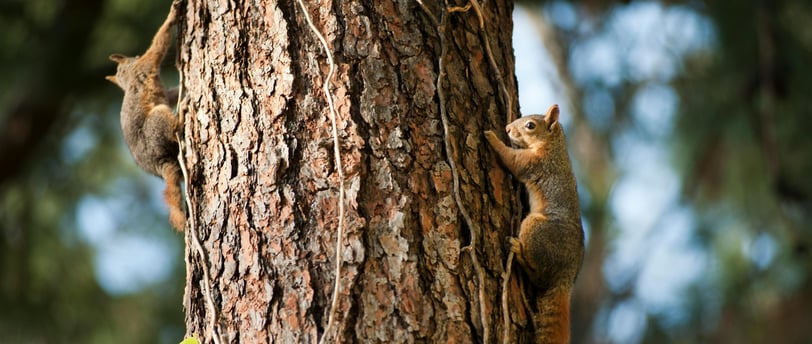Those Freaking Squirrels
Discover a personal technique for dealing with squirrels while training your dog. Learn why these methods are important for effective dog training and how they can help you achieve better results.
TRAINING TIPS
5/22/20252 min read


The Struggle Is Real
Squirrels. Cute, fuzzy, chaotic. We love them… and so do our dogs.
Unfortunately for us, that love often turns into an intense, laser-focused, tail-twitching obsession.
For a lot of dogs, resisting the urge to chase squirrels is nearly impossible. It’s not just a mild interest—it’s like the squirrels have a mission to personally antagonize them. And when you’re training a service dog, that makes things extra complicated.
The Brave (or Really Dumb) Squirrels of Campus
On my university's campus, the squirrels basically run the place. Since they live in a world where predators are rare and students are always dropping snacks, they’ve become either brave, naïve, or both.
There have been several moments where a squirrel not only refused to run away from us, but actually walked right up to Max and me. As you can imagine, Max was not about to ignore that. These squirrel encounters quickly became our biggest training challenge—and they weren’t going away anytime soon.
Why It’s So Hard
The chase instinct isn’t something you can just “turn off.” For many dogs, it’s baked into their DNA. Chasing small, fast-moving creatures like squirrels taps directly into their prey drive—a deeply ingrained, instinctual response.
This is a challenge for many pet owners, but it’s an even bigger deal for service dog handlers. Service dogs are expected to stay focused on their handlers, remain calm in all situations, and resist distractions… even when a squirrel decides to do parkour five feet away.
How We Trained Through It
We had to get creative—and stay patient.
The solution we found worked for us, but it was slow and very intentional. Max has a designated “free space”—a woodsy area where he’s allowed to play, sniff, roll, and just be a dog. It wasn’t meant for training, but it had one unexpected bonus: squirrels. Since it was safe and the squirrels weren’t in real danger, we used that space to let Max get it out of his system. He didn’t just have to watch them—he could actually chase a little. I think that helped him feel less frustrated when he saw squirrels elsewhere.
Everywhere else, it was work time. If we saw a squirrel while training or walking around campus, we’d stop. I’d ask Max to sit, and we’d wait—sometimes for the squirrel to leave, sometimes for Max’s focus to shift. He’s not very food-motivated (especially when distracted), so I stuck to calm praise and pets when he chose to refocus. Over time, he went from needing a full minute to just a few seconds before he could walk on calmly. He still notices squirrels, but now he doesn’t pull or panic—he just glances and keeps moving.
Progress Over Perfection
No matter what strategy you use, one thing matters most: patience.
There will be setbacks. You’ll have moments where your dog absolutely loses their cool. And that’s okay. Training a dog—especially a working one—isn’t about being perfect. It’s about improving over time, even if that time takes longer than expected.
Squirrel Distractions Happen
Squirrels will always exist. So will prey drive. But that doesn’t mean we can’t help our dogs learn to manage those instincts. With the right approach and a lot of patience, even the most determined squirrel-chaser can learn to pause, refocus, and keep walking.
Photo Credit: Alex p on Pexels
